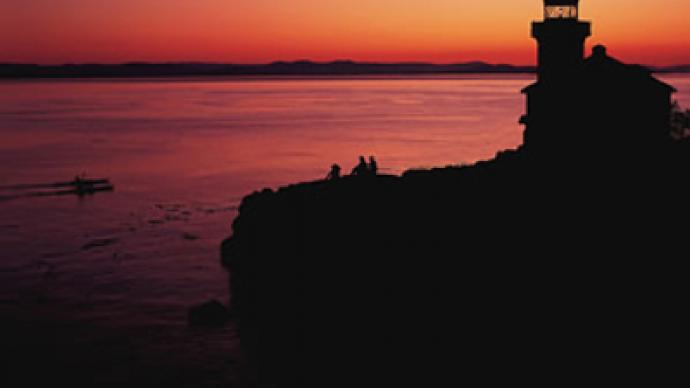Torn apart: Russia’s disputed territories

Being the largest country in the world, uniting dozens of nationalities and cultures, stretching over eleven time zones, Russia is fertile ground for territorial disputes.
Given the country’s dramatic history, with its varied regimes and several wars, several spots on the Russian map still cause questions to its neighbors. And, if some disputes, such as the Kuril Islands’
question with Japan, have been at the forefront of Russia’s international relations for years, others have remained simmering in the shade.
Kuril Islands
Located in the cold waters of the northwestern Pacific Ocean, the Kuril Islands stretch for 1,250 km from the southern tip of Russia's Kamchatka Peninsula southwards to the Japanese island of Hokkaido, thus forming a neat boundary between the Sea of Okhotsk (on the west) and the Pacific Ocean (on the east). All of the islands fall under Russian jurisdiction, although four of the southern islands are the subject of a long-running territorial dispute with Japan.
Perhaps the most popularized Russian territorial dispute, the debate over the Kuril Islands has shifted from the focal point of Russian-Japanese relations, to a background issue, and back again. It has never disappeared from the negotiations’ table. The islands have a unique ecosystem and are the only place on Earth where Rhenium occurs naturally.
In 1875 Japan ceded to Russia the nearby island of Sakhalin in exchange for full Japanese possession of the Kurils. The islands were returned to the Union of Soviet Socialist Republics (USSR) by an agreement reached at the Yalta Conference during World War II (1939-1945). After the war Japan maintained a claim to the southernmost islands, and the territorial dispute still prohibits the countries from signing a peace treaty.
In the early 1990s Japan increased diplomatic pressure for return of the disputed islands, which became a focus of contention between Russia and Japan. In the mid-1990s the two nations continued negotiations about the islands, while there were clashes between Russian patrol boats and Japanese fishing boats in the area.
At the latest summit between the Russian and Japanese leaders on the 18th of February 2009, scant progress was made on resolving the issue.
“On the territories issue, we have agreed to speed up detailed work on a creative, out-of-the-box approach to resolving it within our generation,” Japanese Prime Minister Taro Aso told reporters after meeting with President Dmitry Medvedev on Sakhalin Island.
Kaliningrad
Although disputes over the status of Russia’s westernmost enclave of Kaliningrad have practically ceased, this should be regarded as a signal that all the parties concerned are aware of the serious repercussions that instability in that region could cause.
The region became an administrative unit of Russia in 1946 after the Potsdam conference and the partition of Germany. Although it solidified as an administrative entity, with the collapse of the Soviet Union, the issue of reassimilating the Kaliningrad region into its historic entity of Lithuania arose.
Despite Russia’s steadfastness in relation to the region’s status, the issue remains problematic. Its livelihood still depends on transit through Lithuania. And, with the Baltic states introducing a visa regime with Russia, the communication between Kaliningrad and Russia is increasingly problematic.
Bering Sea
In 2007, Russian scientists made a stunning discovery which could increase Russia’s territory by twice the size of France. The area in question is located in the deep north, buried under layers of ice and water – the Bearing Sea, separating Russia and the U.S. state of Alaska. The sea has been a part of the Russian Empire until 1897, when Emperor Aleksander II sold some of Russia’s territories to the U.S.
The border between the two countries was set up on the 168th meridian – a vague definition. This was the situation until 1976-1977, when scientists proposed for the border to be set up on the overlay of two tectonic plates. However, in 2007 new discoveries were made, suggesting that a wider area than previously anticipated is part of Russia’s continental entity. This question is specifically poignant, since the area is rich in natural resources, such as oil, gas and diamonds.
Barents Sea
Under an agreement ratified in the 1920’s by the League of Nations’
(the predecessor of the UN) country members, the Spitzbergen archipelago in the Barents Sea was fully given over to Norway; nevertheless, all the countries which put their signatures under the agreement were allowed unlimited use of the sea’s waters. The USSR signed the document in 1935 and has been using the waters around the archipelago as a shipment, military and fishing route since.
This situation became more poignant as years went by, as the increased use of the territory by Russian fishermen became problematic for Norway. Instead of amending the agreement, which still allowed free use of the waters, Norway began changing its internal legislation concerning fishing. This change in legislation caused several Russian fishing boats to be arrested and an increased amount of tension in the region, as the Russian side feels slowly pushed out.
Caspian Sea
The seabed of this reservoir has not been divided amongst the Soviet Union and Iran in due course. After the superpower’s collapse, the issue took a new twist, as the borders between the newly-formed states of Kazakhstan, Azerbaijan and Turkmenistan were not defined either.
The bottom of the Caspian Sea is rich in oil and gas, and all of the countries are engaged in a sluggish tug-of-war to gain administrative control of the area.
Anna Bogdanova, RT












